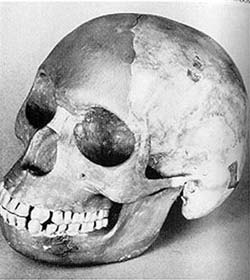 |
|
Koreans protesting against the decision of Seoul National University. Many still believe in Mr. Hwang’s scientific talent, as the text on the flag clearly states: “Bring Hwang Woo Suk back to the research lab” – Photo: Reuters |
These scientific deceptions remain unexplained to this day. It is indeed a fascinating story.
The Alias of Hwang Woo Suk
On March 22, after careful consideration and thorough investigation, Seoul National University had to sign another important decision: revoking the title of “top scientist” from Professor Hwang Woo Suk, who was also removed from its faculty. In summary, Mr. Hwang lost everything—from reputation to job and money.
This was an unexpected turn of events, as previously the Korean public confidently viewed him as a potential Nobel Prize candidate, bringing world-class honor to South Korea after years of striving for economic growth. To invest in him, the government did not hesitate to spend up to $600,000 annually, and the national airline even offered him lifetime free tickets. Now, he is even under investigation for the possibility of misappropriating state funds allocated for scientific research.
Originally a veterinarian, Hwang gained quick fame when he announced the successful cloning of a dog named Snoopy (an Afghan breed). However, his reputation skyrocketed globally after two articles published in the prestigious journal *Science* in 2004 and 2005, where he introduced 11 stem cell lines cloned from human embryonic cells. This was a success that sparked hope for medical research, as these stem cell lines would be used to treat incurable diseases such as paralysis or genetic disorders.
However, the truth soon emerged. On November 10, 2005, Roh Il Sung, a co-author of the paper, acknowledged that he had paid for eggs from 18 women for scientific research. While this was not illegal, it initially raised ethical concerns about Professor Hwang’s research team. Two weeks later, Hwang admitted to the incident and submitted his resignation as the head of the research team.
Things spiraled out of control. In early December 2005, an anonymous email surfaced on the online forum of the Korean Bioethics Information Center, claiming that DNA tests of Hwang’s stem cell lines matched the source cells too perfectly. In a subsequent press conference, Hwang admitted to making mistakes. The situation became chaotic with new revelations. Roh Il Sung claimed in an interview with NBC Korea that their second paper had been fraudulent: only five cell lines were created, not eleven.
Hwang had no choice but to apologize to the public and the government while continuing to insist he was unaware of the fraud. By this point, however, the situation had deteriorated significantly. The journal *Science* retracted both published articles with the agreement of the authors (the first had 15 co-signers, and the second had 25). The South Korean government announced it would withdraw financial support and immediately launched two independent investigations (one by the judiciary and one by Seoul National University, where Hwang taught).
The South Korean Minister of Health had to take responsibility for the lack of oversight, excessive trust in Hwang, and ultimately resigned. The opposition party in South Korea capitalized on this incident to demand the government find ways to recover taxpayer money that had been wastefully spent on fraudulent research. It was during this time that the public learned that Hwang’s group had received funding of up to $40 million!
The scandal surrounding Hwang’s cloning practices shocked the entire South Korean populace. But more painfully, to this day, they still do not understand why Hwang dared to commit such wrongdoing, causing taxpayer money to vanish. Many opinions suggest that Hwang was too fame-hungry and could not stop in the face of the accolades.
The Piltdown Skull
 |
|
The reconstructed Piltdown skull |
This was a “blind eye” case that lasted for 40 years. People hesitated to criticize the discovery simply because the lead scientist had too much prestige. The incident began on December 18, 1912. Lawyer Charles Dawson, also an amateur geologist, teamed up with renowned paleontologist Arthur Smith Woodward, president of the Geological Society of London, to announce to the world their important discovery: the oldest human skull, a missing link in the evolution from ape to human.
For the British, this was a sweet revenge, as until then, French scientists had established their reputation with the discoveries of Neanderthal and Cro-Magnon man.
Immediately, renowned scientists and tourists flocked to the small village of Piltdown, where Dawson and Woodward discovered the skull and jawbone, still attached to two teeth. At that time, fossil age was determined based on the geological age of the discovery site. Dawson argued that he found other fossils such as hippo and elephant teeth from the end of the Ice Age in the area, so the skull must be of the same age, and he inferred it was 500,000 years older than Neanderthal man.
Some were skeptical of this discovery and overly simplistic inference, but fearing Woodward’s reputation, they remained silent. Time passed, and more fossils were discovered in the area. With modern dating methods, it became clear that they did not match the previously published age of the “Piltdown skull.”
It wasn’t until 1949, a year after Woodward’s death, that Dr. Kenneth Oakley, a member of the British Museum, dared to take the Piltdown skull out for fluorine dating. The result: the fossil, preserved as a pride in the British Museum, was not as ancient as previously thought.
Upon closer examination, it was found to have been coated with potassium bichromate to give it an aged appearance. More frighteningly, the jawbone belonged to a monkey, and the teeth had been intentionally filed down to appear worn from chewing. The skull was that of a modern human, and the fossils thought to have been discovered in Piltdown actually came from Malta and Tunisia!
On November 21, 1953, the British Natural History Museum had to acknowledge in its bulletin that the “Piltdown man skull” was a hoax. Carbon-14 dating in 1959 put an end to all doubts: the skull belonged to the medieval period, and the jawbone was only about 500 years old.
Who orchestrated this shocking hoax? Both Dawson and Woodward were no longer around to answer that question. Woodward seemed innocent, as he merely endorsed Dawson’s “discovery.”
Many have continued to decode this case and propose theories that remain unanswered. Some suggest the culprit was Grafton Elliot Smith, an Australian anatomist involved in the research; others point to William Ruskin Butterfield, the curator of Hastings Museum who wanted to get back at Dawson…
However, the most serious theory leans towards the culprit being Teilhard de Chardin, a young Jesuit priest. At the time, he wanted to tease his friend Charles Dawson for his excessive obsession with fossils. When he saw the matter escalating to a national and international level, he did not dare confess.
But overall, that remains a theory.
NGUYỄN QUÂN compiled
| Many still believe that our planet is expanding for various inexplicable reasons. And the unanswered questions about the “memory of water.” |
Next time: The Earth Expands Like a Balloon


















































